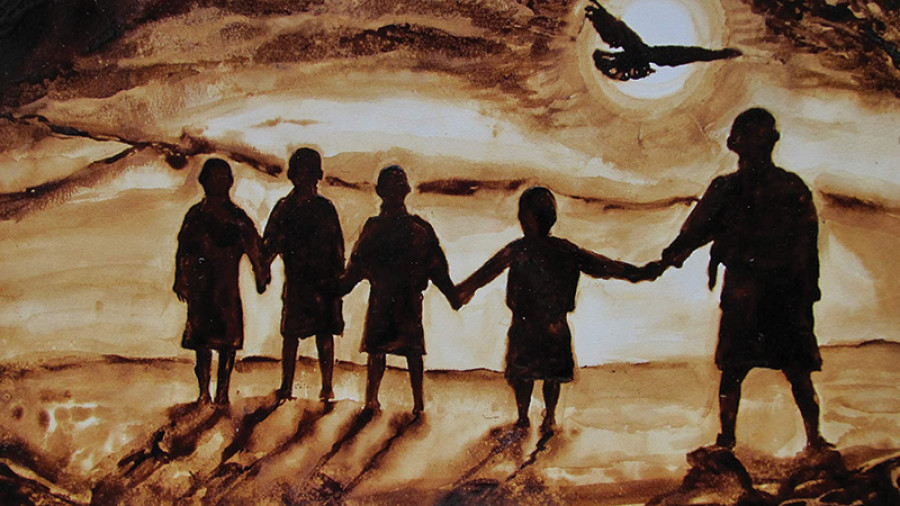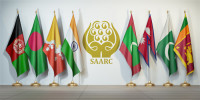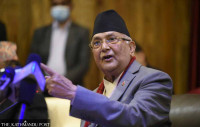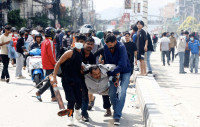Opinion
Helping people on the move
Nepali government should pay attention to the fact that Nepal is now a hub for asylum seekers.
Sapana Phuyal
Despite the fact that Nepal has not signed the 1951 Refugee Convention, it has already hosted about 200,000 refugees. Nepal has hosted Tibetan refugees since the late 1950s, and started to host Bhutanese refugees in the 1990s. In addition, Somali, Pakistani and Iraqi refugees also arrived Nepal in different phases. So, the arrival of a small group of Rohingya Muslims from Myanmar went unnoticed by the Government of Nepal. Beginning in 2012, Rohingyas had an eye on Nepal as a safe land for their life and family.
The on-going Rohingya Muslims refugee crisis stands as a problem to world. There has been an influx of more than 650,000 Rohingya from Myanmar to Bangladesh, and thousands of Rohingya have also entered into India. Of this number, a couple of hundred find their way to Nepal. According to United Nation Refugee Agency (UNHCR) Nepal data, a small number of Rohingya refugees are recognised under international law. After 2012, 147 Rohingya Muslims refugees were documented in Kathmandu. An update on the exact number of Rohingya refugees is still not available, as a process of registration is now on-going. As of now, there are 185 Rohingya refugees who have been registered by the UNHCR in the Kapan refugee camp. Rohingyas refugees have been entering Nepal via the Indian border freely. It is believed that several hundred are living in Nepal without UNHCR recognition.
Mubina Begham and her husband were first Rohinya refugees to cross into Nepal via the Indian border. They are now at the Kapan refugee camp, and now their family consists of four members—they have two daughters. Her husband now is in the custody of the Indian government. She hesitated to talk about her husband and shed light on the issue.
Another refugee at the camp Dil Mahommad arrived Nepal in 2015, he left Myanmar in 2012 but remained in India for three years as an illegal immigrant. India is also hosting about 40,000 Rohingya refugees but according to UN there are only 16,000 Rohingya refugee who have been officially registered in India. The India government introduced the policy to block the Rohingya refugees and also introduced a process to repatriate them to the Myanmar. They claimed that many Rohingyas who fled to India are extremists and thus pose a threat to the country’s security. So perhaps it is these policies that have driven Rohingya’s to seek refuge in Nepal instead.
Before arriving in Nepal via the India border, Mahommad had never heard about Nepal, but once he travelled to Nepal and spent time here he began to see how Nepal is a beautiful country that has tolerance and a lack of discrimination between different ethnic groups. His family consists of nine members, his youngest son Mustafa Noor was born in Nepal and registered by the UNCHR as s refugee. UNHCR is providing humanitarian assistance to them according to their needs, but the Nepali government should also formulate a diverse foreign policy to repatriate refugee. As Myanmar and Bangladesh have agreed for a timeframe in regards to the repatriation of hundreds thousands of Rohingya refugees, those refugees in Nepal must also be taken into consideration.
Nepal is aware of refugee crises and their complications. The resettlement of Bhutanese refugees is still an on-going complication despite the fact that a number of years have passed. We are hosting 8,500 Bhutanese refugees and about 100,000 have been resettled to third countries. It took over two decade to reach this level of success and entailed a milestone agreement between eight countries and UN agencies. Similarly, there are around 15,000 Tibetan refugee in camps as well.
The Nepali government should pay attention to the fact that Nepal is now a hub for asylum seekers. This trend started in the 1950s and is only becoming increasingly apparent.
Phuyal is a sub-editor at Kantipur Television (KTV)




 7.12°C Kathmandu
7.12°C Kathmandu










